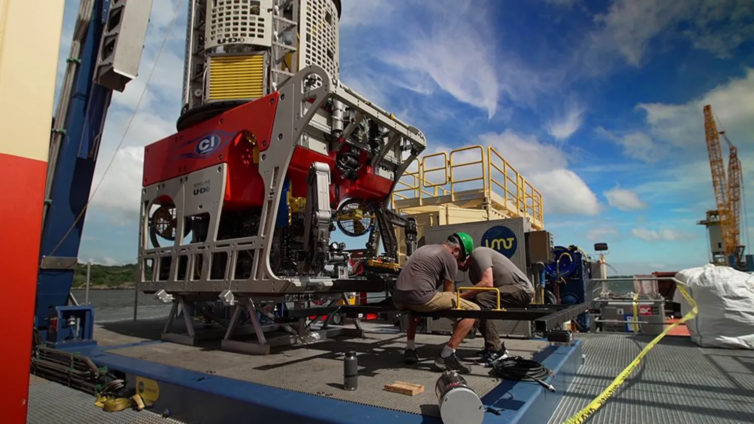
Audio By Carbonatix
A team of imaging experts, scientists and historians set sail for the Titanic on Friday to gather the most detailed photographic record ever made of the wreck.
The BBC had exclusive access to expedition members in the US city of Providence, Rhode Island, as they made preparations to leave port.
They'll be using state of the art technology to scan every nook and cranny of the famous liner to gain new insights into its sinking.
This is the first commercial mission to Titanic since last year's OceanGate tragedy. Five men died while trying to visit the lost ship in a novel submersible.
A joint memorial service will be held at sea in the coming days for them and the 1,500 passengers and crew who went down with Titanic in 1912.
The new expedition is being mounted by the US company that has sole salvage rights and which to date has brought up some 5,500 objects from the wreck.
But this latest visit is purely a reconnaissance mission, says RMS Titanic Inc, based in Atlanta, Georgia.
Two robotic vehicles will dive to the ocean bottom to capture millions of high-resolution photographs and to make a 3D model of all the debris.
"We want to see the wreck with a clarity and precision that's never before been achieved," explained co-expedition lead David Gallo.
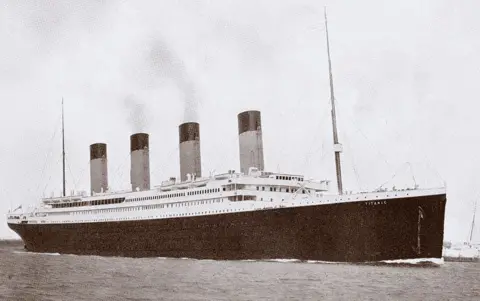
The logistics ship Dino Chouest is going to be the base for operations out in the North Atlantic.
Weather permitting, it should spend 20 days above the wreck, which lies in 3,800m (12,500ft) of water.
It will be a poignant few weeks for all involved.
One of the five who died on the OceanGate sub was Frenchman Paul-Henri ("PH") Nargeolet. He was the director of research at RMS Titanic Inc and was due to lead this expedition.
A plaque will be laid on the seabed in his honour.
"It's tough but the thing about exploration is that there's an urge and a drive to keep going. And we're doing that because of that passion PH had for continuous exploration," explained friend and historian Rory Golden, who will be "chief morale officer" on Dino Chouest.
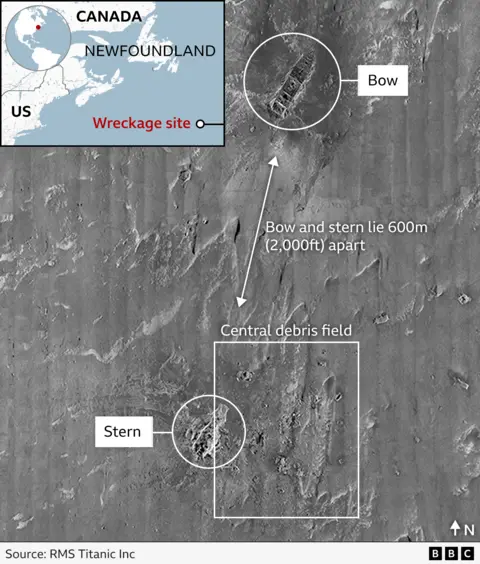
There can be few people on Earth who don't know the story of the supposedly unsinkable Titanic and how it was holed by an iceberg, east of Canada, on the night of 15 April 1912.
There are countless books, movies and documentaries about the event.
But although the wreck site has been the target of repeated study since its discovery in 1985, there still isn't what could be described as a definitive map.
And while the bow and stern sections of the broken ship are reasonably well understood, there are extensive areas of the surrounding debris field that have received only cursory inspection.

Two six-tonne remotely operated vehicles (ROVs) intend to put that right. One will be fitted with an array of ultra-high-definition optical cameras and a special lighting system; the other will carry a sensor package that includes a lidar (laser) scanner.
Together, they'll track back and forth across a 1.3km-by-0.97km section of seafloor.
Evan Kovacs, who's in charge of the imaging programme, says his camera systems should produce millimetre resolution.
"If all of the weather gods, the computer gods, the ROV gods, the camera gods - if all those gods align, we should be able to capture Titanic and the wreck site in as close to digital perfection as you can get. You would be able to quite literally count grains of sand," he told BBC News.
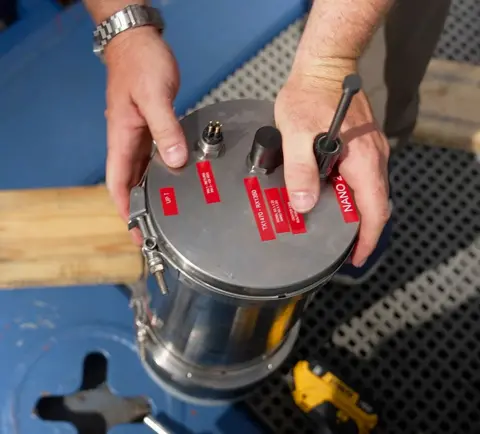
There's huge anticipation for what the magnetometer aboard the sensor ROV might produce. This is a first for Titanic.
The instrument will detect all the metals at the wreck site, even material that is buried out of sight in the sediment.

"It would be an absolute dream to determine what has happened with Titanic's bow below the seafloor," explained geophysics engineer Alison Proctor.
"Hopefully, we'll be able to deduce whether or not the bow was crushed when it hit the seabed, or if it might actually extend down well into the sediment intact."
The team wants to review the state of some well known objects in the debris field, such as the boilers that spilled out as the opulent steamliner broke in half.

There's the desire, too, to locate items thought to have been sighted on previous visits. These include an electric candelabra, which in its day would have been a fascinating curio, as well as the possibility of a second Steinway grand piano.
The musical instrument's wooden surround would have long since decayed away, but the cast iron plate, or frame, that held the strings should still be there, perhaps even some of the keys.
"For me, it's the passengers' possessions, especially their bags, that are of greatest interest," said Tomasina Ray, who curates the collection of Titanic artefacts held by the company.
"It's their belongings - if we are able to retrieve more in the future - that help flesh out their stories. For so many passengers, they are just names on a list, and it's a way to keep them meaningful."

This will be RMS Titanic Inc's ninth visit to the wreck site. The firm has attracted controversy in recent years with its stated desire to try to bring up part of the Marconi radio equipment that transmitted the distress calls on the night of the sinking.
It won't happen on this expedition but if and when it does occur, it would mean extracting an object from inside the disintegrating ship.
For many, Titanic is the gravesite to the 1,500 who died that night in 1912 and should not be touched, its interior especially.
"We get that and understand it," said company researcher James Penca.
"We dive to Titanic to learn as much as we can from her; and like you should with any archaeological site, we do it with the utmost respect. But to leave her alone, to just let her passengers and crew be lost to history - that would be the biggest tragedy of all."
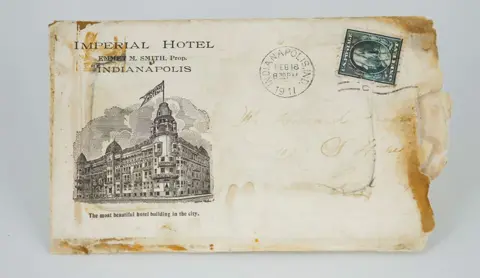
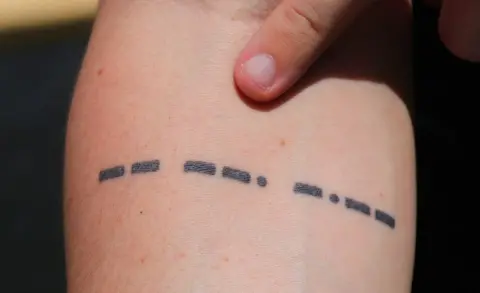
Latest Stories
-
None of NPP’s 5 flagbearer aspirants is credible – Abdulai Alhassan
24 minutes -
Police arrest suspect for unlawful possession and attempted sale of firearm
2 hours -
3 arrested in connection with Tema robberies
2 hours -
Your mouth on weed is nothing to smile about
2 hours -
25% university fees hike, what was the plan all along? — Kristy Sakyi queries
4 hours -
Some OMCs reduce fuel prices; petrol going for GH¢10.86, diesel GH¢11.96
4 hours -
Trump says health is ‘perfect’ amid ageing concerns
4 hours -
China’s BYD set to overtake Tesla as world’s top EV seller
4 hours -
Joy FM’s iconic 90’s Jam returns tonight: Bigger, better, and packed with nostalgia
5 hours -
Uproar as UG fees skyrocket by over 25% for 2025/2026 academic year
6 hours -
Japan PM joins fight for more female toilets in parliament
7 hours -
Ga Mantse declares war on fishing industry child labour
8 hours -
Adom FM’s ‘Strictly Highlife’ lights up La Palm with rhythm and nostalgia in unforgettable experience
9 hours -
OMCs slash fuel prices as cedi gains
10 hours -
Around 40 dead in Swiss ski resort bar fire, police say
10 hours

